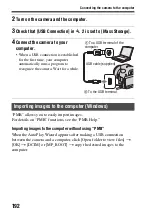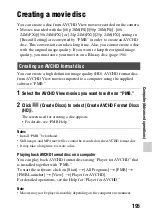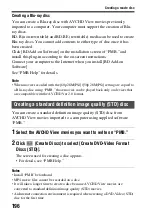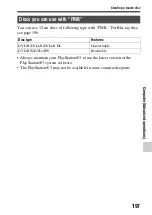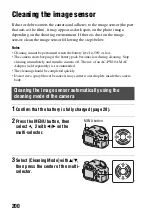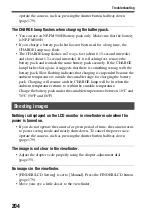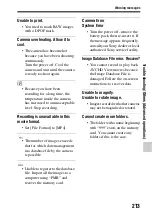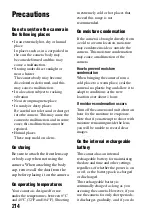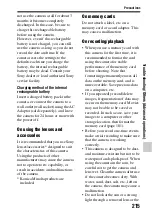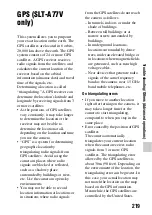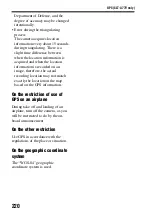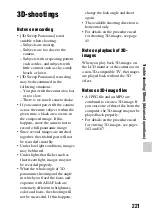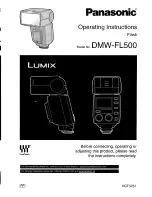
206
Troubleshooting
The flash does not work.
• The flash mode is set to [Autoflash]. If you want to make sure the flash fires
without fail, set the flash mode to [Fill-flash] (pages 47, 135).
The flash takes too long to recharge.
• The flash has been fired in succession in a short period. When the flash has
been fired in succession, the recharging process may take longer than usual
to avoid overheating of the camera.
A picture taken with the flash is too dark.
• If the subject is beyond the flash range (the distance that the flash can
reach), the pictures will be dark because the flash light does not reach the
subject. If the ISO is changed, the flash range also changes with it. Check
the flash range in “Specifications.”
The date and time are recorded incorrectly.
• Set the correct date and time (page 33).
• The area selected with [Area Setting] is different from the actual area. Set
up [Area Setting] again (page 33).
The aperture value and/or shutter speed flashes when you press the
shutter button halfway down.
• Since the subject is too bright or too dark, it is beyond the available range of
the camera. Adjust the setting again.
The image is whitish (Flare).
Blurring of light appears on the image (Ghosting).
• The picture was taken under a strong light source, and excessive light has
entered the lens. Attach a lens hood.
The corners of the picture are too dark.
• If any filter or hood is used, take it off and try shooting again. Depending on
the thickness of the filter and improper attachment of the hood, the filter or
the hood may partially appear in the image. The optical properties of some
lenses may cause the periphery of the image to appear too dark (insufficient
light). You may compensate for this phenomenon with [Lens Comp.:
Shading] (page 180).

